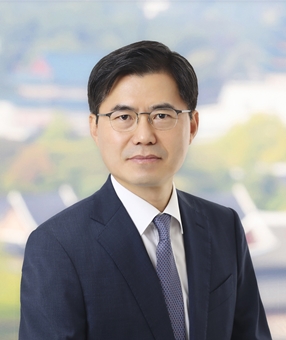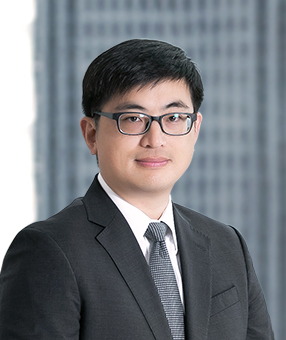On September 30, 2021, the Korean Patent Court held for the first time that a regulatory approval of a PEGylated drug could be the basis for patent term extension (PTE) of a patent covering the PEGylated drug.
Section 89 of the Korean Patent Act allows for certain types of chemical compound patents or related patents (e.g., claiming a composition, process of manufacturing, or formulation involving the compound) to receive extended patent terms if they pertain to an approved medicinal or agricultural product, but cannot be practiced after grant due to pharmaceutical or agricultural regulatory approval requirements. While Korea has granted PTEs since 1987, in 2013 the Patent Act was amended to clarify that the regulatory approval for which PTE is claimed must be the "first" regulatory approval in Korea for a "new chemical entity." The Enforcement Decree of the Korean Patent Act generally defines "new chemical entity" to mean a new substance having an active moiety with a novel chemical structure that exhibits a pharmacological effect, but there have still been disputes as to precisely what approved products correspond to "new chemical entities."
The main issue in this case was whether the PEGylated version of an earlier approved substance constituted a "new chemical entity" that would support the grant of PTE. PEGylation is the process of covalent attachment of polymer (polyethylene glycol; "PEG") chains with molecules such as peptides, antibody fragments, etc., which leads to improved pharmacokinetics and biological function. The drug Avonex® comprising the active ingredient "interferon beta-1α" had previously been approved in Korea for relapsing multiple sclerosis. The instant case involved the drug Plegridy®, which comprises the active ingredient "PEGinterferon beta-1α," or interferon beta-1α covalently conjugated to methoxy PEG, which was also approved for relapsing multiple sclerosis.
Biogen filed a PTE application for a patent covering Plegridy®, but the Korean Intellectual Property Office (KIPO) rejected the PTE application on grounds that i) Avonex® was already approved; ii) both drugs had the same indication for treatment of relapsing multiple sclerosis, and iii) in both drugs, the active moiety exhibiting the therapeutic effect for relapsing multiple sclerosis was interferon beta-1α, and thereby concluded that PEGinterferon beta-1α was not a "new chemical entity." KIPO's position has been that "pharmacological effect" in the Enforcement Decree means an indication, and that the active moiety exhibiting a pharmacological effect should be considered to mean only the portion of the molecule that binds to a receptor. The Intellectual Property Trial and Appeal Board (IPTAB) upheld KIPO's rejection, reasoning that the indication of relapsing multiple sclerosis and the biological activities associated with the indication (e.g., antiviral activity) of PEGinterferon beta-1α were not substantially changed or improved compared to interferon beta-1α, so the active moiety of Plegridy® corresponded to "interferon beta-1α," not "PEGinterferon beta-1α."
However, on appeal, the Patent Court revoked the IPTAB decision, holding as follows:
- The "pharmacological effect" of the amended Enforcement Decree cannot mean simply an indication (diseases or symptoms for which therapeutic effect is expected by a drug), and it is more reasonably construed to refer more generally to the effect of diagnosing, treating, alleviating, or preventing a specific disease by the pharmacological action inherent in the drug product.
- The active moiety exhibiting the pharmacological effect in this case is "PEGinterferon beta-1α," not "interferon beta-1α," since PEGinterferon beta-1α has different biological activities (such as antiviral activity, anti-proliferative activity, anti-angiogenic activity, etc.) and improved pharmacokinetic properties (such as decreased clearance, increased half-life, increased bioavailability, etc.) compared to interferon beta-1α, and these biological activities and pharmacokinetic properties have resulted in an increase in the pharmacological effect of treating relapsing multiple sclerosis. In other words, the different biological activities, improved pharmacokinetic properties, and increased pharmacological effect were all effects of PEG conjugation to interferon beta-1α, so the active moiety was PEGinterferon beta-1α.
The Court specifically reasoned that if "pharmacological effect" was limited to an indication as KIPO argued, all drugs having a therapeutic effect for the same symptoms would be interpreted to have the same pharmacological effect regardless of the duration and degree of the therapeutic effect, the presence or absence of side effects, etc. which would not conform to the generally accepted meaning of "pharmacological effect."
We believe this decision significantly broadens the interpretation of "new chemical entity" and potentially makes PTE available for many patents not previously considered eligible by KIPO. Further, with this Patent Court ruling, the "first regulatory approval for a new chemical entity" requirement in the Korean PTE system was brought into international harmony with the similar requirements of the US and European PTE/SPC system, under which a PEGylated substance has been recognized as being eligible for PTE.
Related Topics







